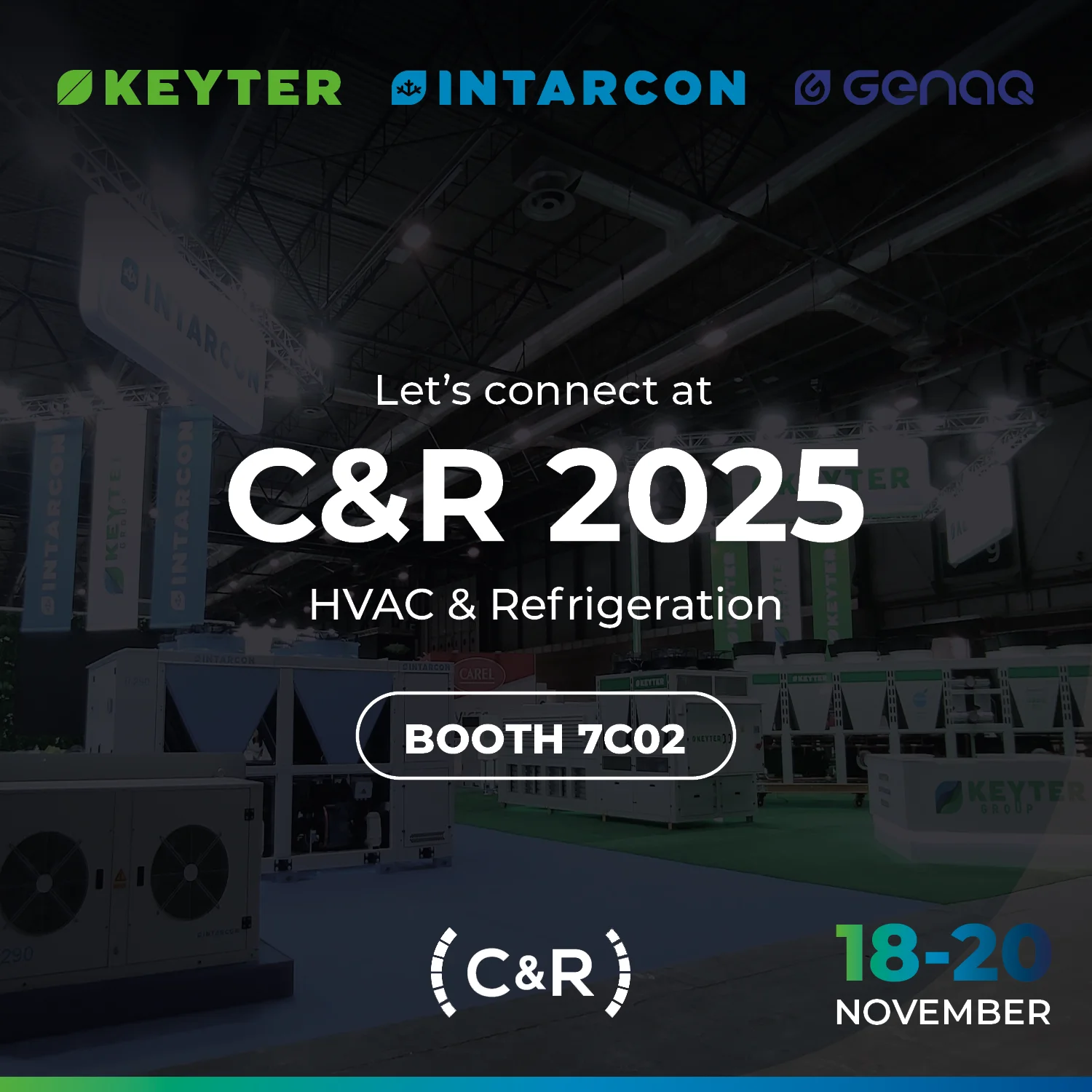Energy Efficiency in Industrial Refrigeration – Part 2: Heat recovery strategies
Continuing our series on energy efficiency in industrial refrigeration, the first part examined the key technologies driving a more sustainable cold industry. In this second instalment, we focus on a fundamental aspect: heat recovery in industrial refrigeration.
In every refrigeration system, the heat extracted from the product or ambient air must be released outdoors through condensation. Traditionally, this heat has been treated as waste and dissipated via cooling towers or air condensers. However, from the perspective of energy efficiency and the circular economy, this heat becomes a valuable resource that can be reused to meet other thermal demands within the facility.
Heat recovery potential in industrial refrigeration
The thermal energy available in the condensation circuit typically represents between 125% and 135% of the total energy absorbed by the system.
In practical terms, this means that an industrial refrigeration plant can fully cover its domestic hot water (DHW) requirements, as well as space heating or low- to medium-temperature process heating, essentially at no additional energy cost.
Below, we outline the most common applications and the key benefits of efficient heat recovery.
Typical heat recovery applications
-
Production of DHW for cleaning or other process needs.
-
Support to heat pumps to achieve higher temperatures for demanding processes.
-
Heating of offices or adjacent spaces.
-
Replacement or supplementation of gas boilers, reducing fossil fuel consumption.
-
Defrosting of evaporators without electric heaters, cutting peak electrical demand.
-
Floor heating in doorways or loading docks to prevent ice build-up.
Strategic benefits
-
Reduced overall energy consumption by recovering heat that would otherwise be lost.
-
Direct cost savings in fuel or electricity used for heat production.
-
Lower CO₂ emissions, improving the company’s environmental footprint.
-
Improved return on investment (ROI), particularly when combined with schemes such as Energy Savings Certificates (ESCs).
Practical example
A 10,000 m² refrigerated logistics platform can recover enough condensation heat to cover 100% of its DHW needs, provide heating for offices and changing rooms, perform evaporator defrosting without additional electrical input, and even heat floor areas at doorways and loading bays to prevent ice formation.
This eliminates the need for gas boilers, reduces safety risks, and enables annual energy savings equivalent to tens of thousands of euros through efficient heat recovery.






